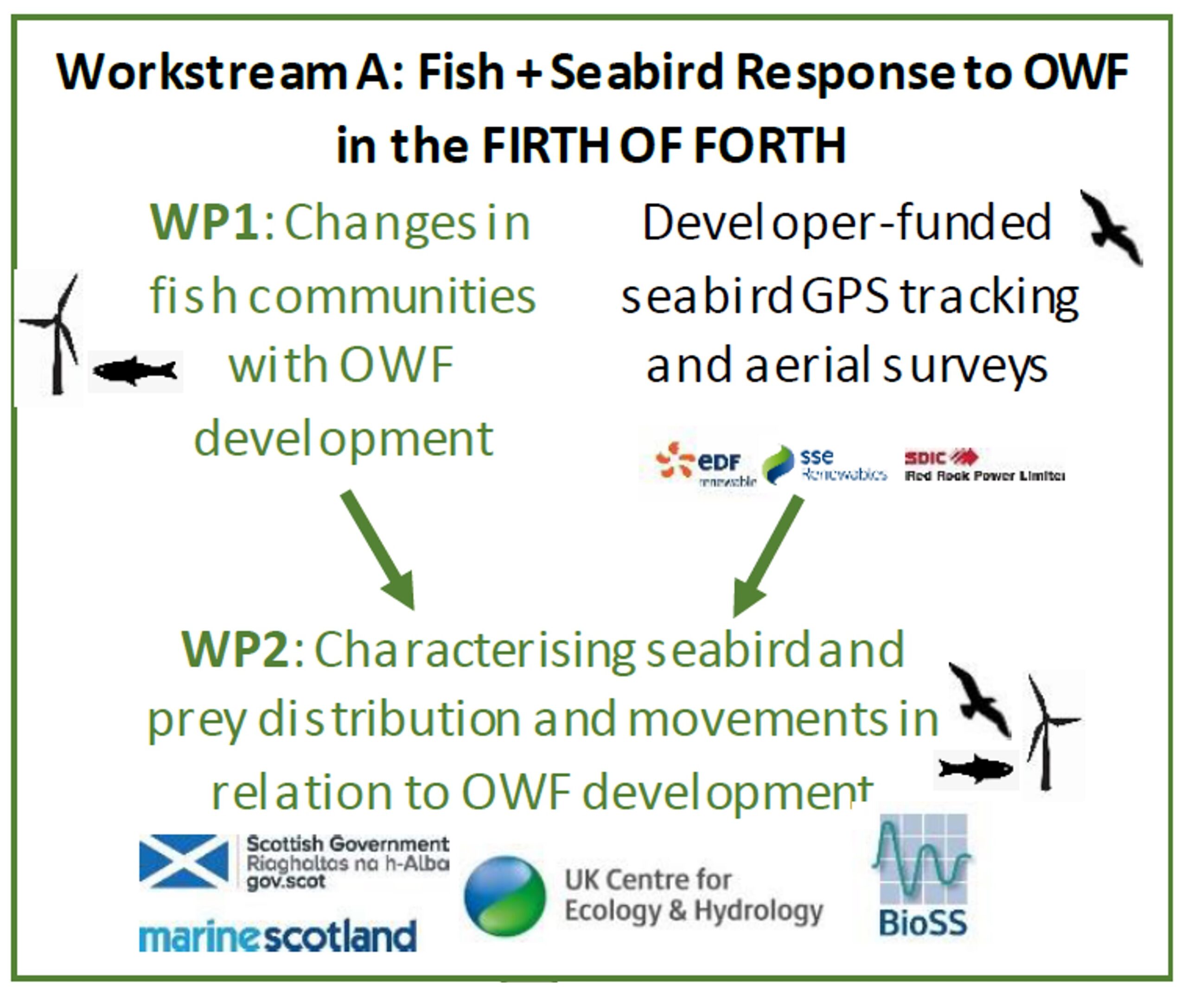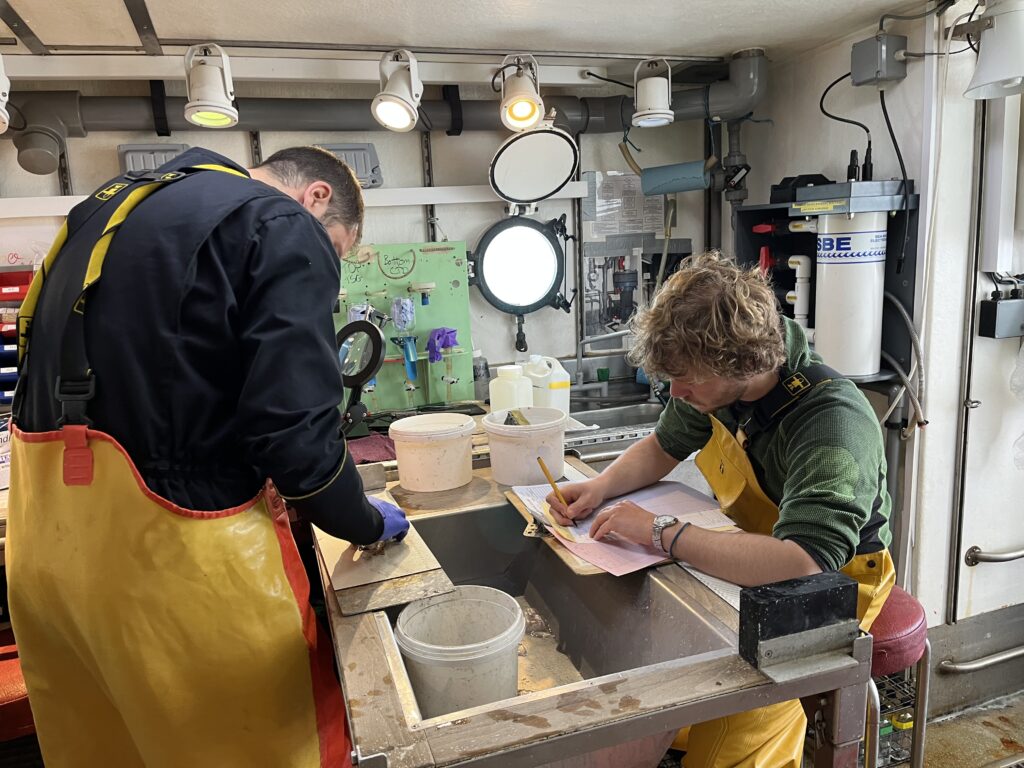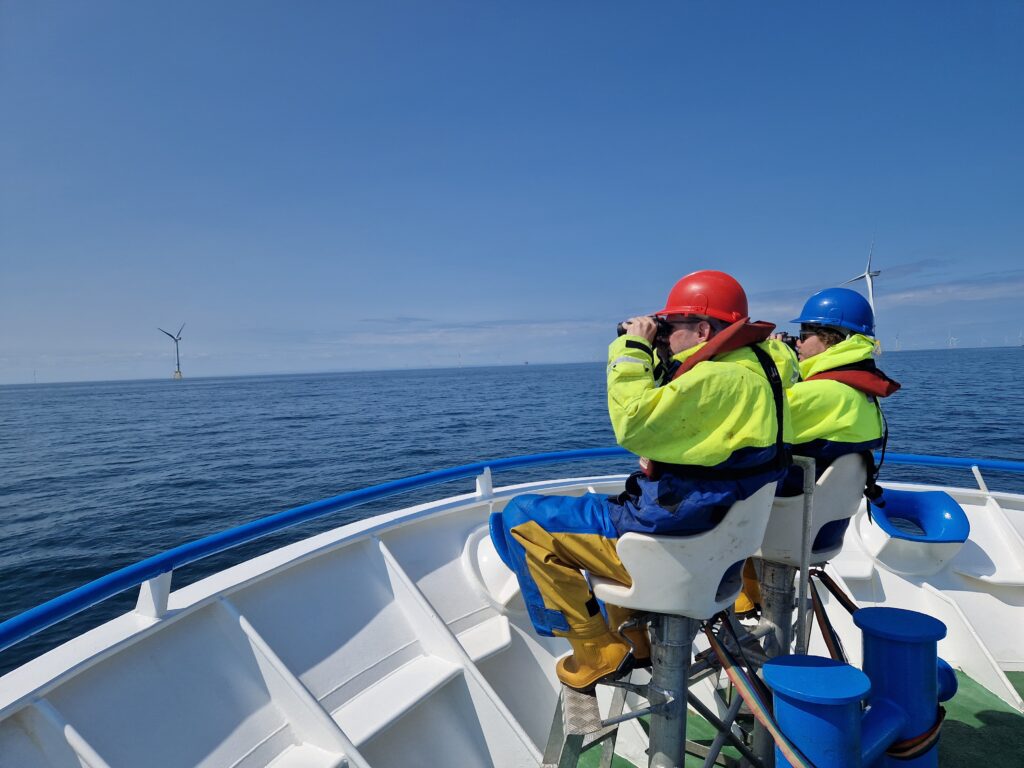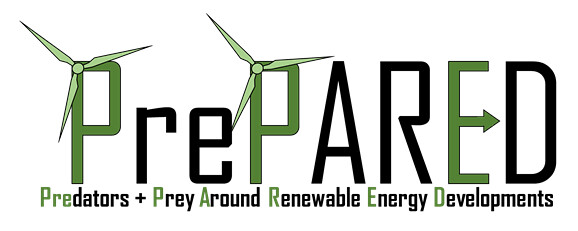Workstream A
Fish and Seabird Response to Offshore Wind Farm Development
Forth and Tay

Workpackage 1: Changes in fish communities with OWF development in the Forth
During 2022-24, new empirical data on fish responses to the Neart na Gaoithe (NnG) and Seagreen OWF sites in the Firth of Forth, will be collected.
Using fish biomass acoustic surveys, trawls, baited fish traps, cameras and sandeel grabs from Marine Scotland’s research vessels (Alba na Mara and Scotia), distribution of fish during construction and operation of the OWFs will be assessed.
Broad-scale fish communities will be characterised, and prey landscapes will be generated using data from surveys across the Firth of Forth region (Task 1.1), while fine-scale prey landscapes will assess changes in prey around individual turbine bases, compared with reference areas outside of the development site (Task 1.2).
OWF-induced changes in fish communities, biomass and abundance will be assessed.

How do broad-scale prey landscapes and fish communities change in relation to OWF development in the Firth of Forth?
How do fine-scale fish communities change in relation to OWF development in the Firth of Forth?
Workpackage 2: Characterising seabird and prey distribution and movements in relation to OWF development

At the same time as fish surveys, information on seabird distribution and movement will be obtained via developer-funded (EDF-R and SSER) GPS tracking and digital aerial surveys.
The role of prey and OWF construction/operation in influencing patterns of seabird distribution, behaviour and movement will be characterised using the fish and seabird data, plus environmental covariates from the MSS Scottish Shelf Model.
The spatial distribution (Task 2.1) and movement (Task 2.2) of seabirds in relation to prey and OWF development will be modelled to allow full quantification of uncertainty. Linking seabird movement with prey will allow assessment of how changes in prey distribution and OWF construction/operation affect seabird movement, as well as facilitating modelling of barrier effects.
The extent to which inclusion of prey with spatial distribution and movement modelling of seabirds will be assessed. This has the potential to (a) reduce uncertainty in estimating baseline densities (used in collision risk modelling or the displacement matrix) and (b) increase power when quantifying displacement rates of seabirds, caused by OWF development (Task 2.3).
Characterising seabird spatial distribution in relation to prey abundance and OWF development.
Movement modelling to link seabirds and prey, detecting changes in response to prey movement in relation to OWF development.
Evaluating potential for use of prey data to reduce uncertainty and increase power when estimating displacement rates for seabirds

